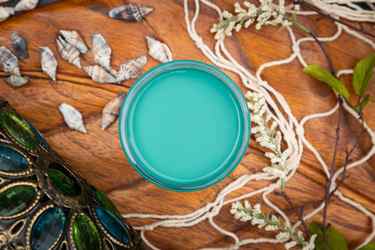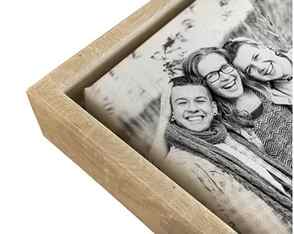This article is not about shooting ‘Day For Night,’ where you film during daylight hours and use in-camera tricks and/or post-production magic to make your footage appear to be shot at night. Instead, we’ll focus on techniques for illuminating a scene that is supposed to take place in the dark.
Night Lighting – Part 1 – Tackling Large Night Exteriors
An exterior at night is one of the most daunting undertakings for an inexperienced cinematographer. The fact that large areas have to be illuminated while still creating the idea in the audience of darkness isn’t easy to conceptualize.

Photo top of page, BTS from from “The Small Escape” for BMW – DP Khalid Mohtaseb – Photo above – Nighttime lens change – Photo Jeff Berlin
The first thing one must recognize about lighting a large night exterior is that if something is unlit, it will disappear. In the daytime, the sun is always there to provide at least a minimum illumination, but the sun is not there to do that at night. The moon doesn’t provide enough light to illuminate a scene. A night exterior in a city will probably have some existing light sources, but they usually aren’t enough to fully light a scene; they can’t be easily controlled, and they have a plethora of other problems. Lighting a scene away from a city, when there is no available light, is a particular challenge. It has to be lit, without seeming to be lit. Until a DP can light a night exterior, they aren’t ready for features or major television.
It’s important to understand about night lighting is that only part of the lighting can actually be done at night. Certainly, all the final light readings and/or the examination of the waveform monitor display has to be done in full darkness, as the light changes as the sun sets, and the readings in the daytime will be very different than those at night. However, it is preferable to do the positioning of the equipment and the initial lighting design in daylight. Crews work better and more efficiently in daylight, and it’s easier for the DP to see clearly where the lights and equipment are being positioned. It’s also safer. If scheduling and limits on working hours mean the main unit can’t work during the day (if nights are on the schedule, the crew will work all night), it is strongly recommended a pre-light and pre-rig crew prepares the set based on a lighting design prepared by the cinematographer and the gaffer. The set won’t be fully lit when the pre-rig crew is finished, but all the cables will be laid, the heavy equipment positioned, and a rough lighting design in place. When the main unit arrives, they can work much more quickly and not have to work more than a twelve hour day.
Nights are a complexity for any production. Crews have to have a “turnaround” (the time away from set, usually a minimum of between ten and twelve hours) so they can get an adequate amount of sleep. If the crew has been shooting in the daytime earlier in the week and then go to nights and then production wants to go back to days, the scheduling is very difficult for those who make the schedules; the production manager and assistant directors. For this reason, night shoots on a production are often done on consecutive nights to reduce the turnaround issues. Also, the transition from days to nights is rarely a smooth one and crews are more inclined to make mistakes and will work more slowly right after making the change. Their body is telling them to sleep, but they have to stay awake. Therefore, night schedules shouldn’t be ambitious, no matter how well-intentioned those ambitions. Night shoots are also dangerous and tired crews working in darkness have accidents. The DP as one of the leaders of the crew should be vigilant and remind everyone to be careful.

Frame from “The Small Escape” for BMW – DP Khalid Mohtaseb – See “Articles” section above for story on this film
Shooting in the Middle of Nowhere
In a rural or completely unlit location, the first thing a DP wants to do is build up a base level. The base level is the minimum illumination needed for a set, lighting even the darkest shadows. Rarely does a DP want to let the light drop off into heavy underexposure as those areas that are unlit will deteriorate in camera and may cause image noise or artifacting. It’s also unnatural; audiences find “black holes” disconcerting. To them, it’s as if part of the image is simply missing. Base-light brings every part of the image into an acceptable range in the camera so there is detail across the whole frame. How much base-light is needed is determined by the lens aperture and the sensitivity of the camera’s image sensor. Shoot with fast lenses and the VENICE for example, with its highly sensitive sensor, dual base ISO and very good low-light performance, and it only requires a very small amount of base-light to hold details in the shadows.
Base-light usually isn’t directional; this is to say it shouldn’t show or throw an obvious shadow. Hard shadows suggest a directional light source, which would be unmotivated in a rural area. A base-light illuminates without its presence being evident, so It is usually a soft light and non-directional, and it is designed to cover a large area. Lights that are passed through heavy diffusion or are bounced off large surfaces can make good base-lights. One example of a base-light for a large night exterior is something called a moon-cube (although it’s known by many names). A typical design of a moon-cube is several 12′ by 12′ frames (sometimes 20′ by 20′) rigged together to form a large box. The frames are covered with heavy diffusion material, and lights are rigged inside and pointed at the surfaces of the diffusion mediums, making all the diffusion surfaces glow. The cube is then lifted by a large crane and suspended above the exterior location. The light level from the cube can be adjusted with dimmers, or neutral density material, to produce a low-level light. It can seem like moonlight.
The moon-cube can’t be the only light used for an exterior location. As it is an overhead light it won’t illuminate the eyes, and this is key; much of an actor’s performance is in their eyes. Many DP’s supplement the overhead base-light with some frontal fill light. The frontal fill might be a bounce light, again very soft and non-directional, possibly off a 12′ x 12′ frame of a white bounce material. Soft lights tend to blend together, so the audience doesn’t really get a sense of the direction of the light; it can still seem a principally overhead light, but now the eyes are illuminated, and the audience can see the best part of the performance. If the levels are kept low, and if the background drops off into darker tones (again, not complete black) the illusion of night will be created, even though the subjects are lit.

“Motherland” – DP Jon Joffin, ASC – Photo Freeform/David Bukach
The fill light doesn’t have to be from the front. The subjects can have a directional backlight to separate them from the background, letting the faces drop into shadow, which can create a sense of mystery and intrigue. Or the fill light can come from the side, half illuminating the face, which again is a fairly dramatic effect. As long as the DP has a base light and some fill, and a dark background while holding details everywhere, they will produce an acceptable night image.
Of course, a DP can’t only light the actors or the foreground; there is the background to think about, particularly when shooting in wooded areas, or with a few buildings in the background. The foreground base-light may not have sufficient strength to illuminate the background, or tree branches may obscure the base-light and cause the background beneath the trees to drop into deep shadow. In these circumstances, a DP can supplement the main overhead light with lights called “specials”. Specials are small sources hidden further back in the set that can pick out details of things the DP wants the audience to see. If it’s a wooded area it might be the trunks of a few trees. If there are buildings, specials can pick out the building’s surfaces. Large frames can’t be used in the back of a set because they will be seen by the camera. So smaller directional sources are used and can be hidden behind trees or blinds made out of black material. (the black blends with the shadows). The great thing about specials used in the distance is that at night audiences can’t detect the direction from which the light comes. So though the sources are “unmotivated” to the audience, they seem wholly natural and just light spilling from, well, somewhere. It doesn’t seem intuitive that it will work, but it works. The specials are very important because without them the background can become another black hole and a good cinematographic image has to have foreground, middle distance, and background to create dimensionality. Film is a two-dimensional plane, and the DP must create an illusion in the audience’s mind of three dimensions, and for that, they need overlapping shapes and some minimum exposure of the objects at those different distances.
Even with specials, the overall appearance of backgrounds, particularly in wooded areas, can simply go too dark. The temptation is to rig another big base-light further back in the set, but in a wooded area, branches are again a problem. The good news is that when lighting at night, there is no shortage of dark areas, and those dark areas serve the DP. Multiple sources in interiors or in daylight can cause confusing mixed shadows, which are unattractive, but in night exteriors, those shadows disappear into the areas of low exposure. So DP’s sometimes use small soft sources like paper lanterns or balloon lights (more on those later), and hang them in trees at regular intervals in the background just out of the shot. This way, the DP can build up the background, work their way around the branches and provide an overall soft illumination. As soft sources blend, the effect will seem to the audience like a single overhead source. The rigging is also easy as the cables can easily be hiding in those same low exposure areas as can any necessary rigging.

Nighttime set for “The Dig” – DP Claudio Miranda, ASC – Photo Jeff Berlin
Bigger budget films might do one better than moon-cubes and go for a light like a Musco Light. A Musco light is an array of very powerful light sources at the top of a large dedicated crane. The light sources can be remotely operated. The Musco light can be positioned near the set and can provide various types of light, like overhead light or something more directional. It can combine the base-light with the fill light and provide a three-quarter or full back-light, or even a sidelight over a large area while also building up the base level. A Musco light can also cover a much wider area than a moon-cube.
On the other end of the budget spectrum, if a crane or a Musco light is beyond the budget, it is possible to light with only soft frontal lights. These can be bounce lights or lights passed directly through diffusion sources. Of course, that means the foreground could be much brighter than the background, so a DP will want to light the foreground to the very minimum level and use small (inexpensive) specials to pick out a few things in the background, and some lights (on stands) to provide backlight on those subjects and thereby separation. The DP might also use small paper lanterns rigged in trees (if there are trees) to provide some additional fill in the background. Although this minimalist set up may leave areas of black, if certain background elements are picked out, the audience can fill in what they don’t see, and it can still work.
One lighting set-up that is somewhere between a Musco light, and a few bounce lights is the lighting balloon. Lighting balloons are what they sound like, they are; balloons that provide light. They are filled with helium, and they have lights inside them. The envelope of the balloon is diffuse and softens the light. The quality of the light is very much like a moon-cube, but rather than requiring a large lifting crane they just need a few cables to hold them in place. They are easy to use, though they don’t generally cover an area as large as a moon-cube, though there are some very large lighting balloons now available. One thing to consider with a balloon is the weather; strong winds make them unusable (by the same token, very strong winds make crane-based lights unsafe, and they have to be brought down).
Part 2 coming soon – Lighting in the City at Night
About the author:
Steven Bernstein, DGA, ASC, WGA is an ASC outstanding achievement nominee for the TV series Magic City. He shot the Oscar winning film “Monster,” “Kicking and Screaming,” directed by Noah Baumbach, “White Chicks” and some 50 other features and television shows. The second film he wrote and directed, “Last Call,” stars John Malkovich, Rhys Ifans, Rodrigo Santoro, Zosia Mamet, Tony Hale, Romola Garai and Phil Ettinger, is scheduled for release later this year.
Steven can be followed at Stevenbernsteindirectorwriter on instagram where he regularly posts short insights and illustrations about filmmaking.
Motivation
If we want natural-looking light at night, we have to think about its source or “motivation.” Before we continue, ask yourself this question: where is the light at night coming from?
Exterior examples: moon, street lights, neon lights, car/motorcycle headlights, flashlight, campfire, lightning, explosions, cigarette lighter, cigarette, torch, lights from inside a house/apartment/store shining outside, etc.
Interior examples: Ceiling light, table lamp, television set, fireplace, candlelight, open refrigerator door, computer/tablet/cell phone, exterior light such as a street lamp, etc.
Now, how do you replicate this light so that your audience is able to see what they need to while keeping them in the reality you are trying to create? How do you show the emotion, reaction or movement of your character while either using this actual light or replicating it?
Let me take you back to roughly 1635 and a painting by Mattias Stom (figure 1). Talk about motivation! Notice how hard the light is on the faces and bodies. Light at night is generally “hard,” not “soft” or diffused. Look at the fall-off from this candlelight. Any part of the subject that is closer to the light — the face, the robe, the hat feathers, etc. — will be brighter than parts of the subject that are further from the light source. Illumination “falls off” the further it gets from its source.


Color
Filmmaking convention says night scenes are blue in tint; so unless you’re a rebel, it’s blue. Candle, torchlight and campfires are orange. Street lights are orange as well, fluorescent lighting comes off as green and neon can be just about any color. Those are the rules.
Over-lit/ultra blue night scenes like those in “Percy Jackson: Sea of Monsters” (2013) and “Harry Potter and the Sorcerer’s Stone” (2001) (figure 3) may distract from the story. But does this technique tell the story better? The light at night seems to have been represented as blue for as long as color film has been a thing? It’s unlikely the audience even notices that the “motivation” for the light is completely unnatural. The ‘blue over lighters prevail as the audience can see the action yet still believe it is nighttime.

“The Lord of the Rings: The Fellowship of the Ring” (2001) director of photography Andrew Lesnie was asked where the source of light in one of his night scenes was coming from and he replied, “Same place as the music.”
Color-temperature-blue (CTB) gels on your lights will give you that night look. Don’t white-balance with the gel on the light or your camera will do what our eyes do automatically and adjust back to “normal color.” Another option is adding a blue tint in post. Run some tests to see what looks best for your specific situation.
Tricks of the trade
A favorite amongst noir directors is the silhouette. Strong backlighting that “crushes” the detail of the subject to complete black coupled with extreme camera angles, deep depth of field, wide-angle lenses and a whole lot of rain, smoke and fog will give you the noir look. A similar noir shot to the silhouette is the high contrast shot. High contrast lighting can be seen in night scenes from the 50s noir classic “The Big Combo” (1955) — which also used smoke — to “Clockwork Orange” (1971) (figure 5), “The Shining” (1980) and who can forget, “The Exorcist” (1973)?

In addition to high contrast lighting, strategic light placement can help add definition to your shots. You might remember the hair light or rim light from your three-point lighting class? Rim lights are yet another favorite for lighters of the night.
And finally, an old trick: “Complete Wetdown” reflects light off the street. (figure 5) It gives some more depth to the image and it looks prettier and “pops” more than plain dry asphalt. A wet street at night combined with light creates a more contrasty look with the dark blacks and the highlights. Justification? Don’t need it—dry streets look boring.





